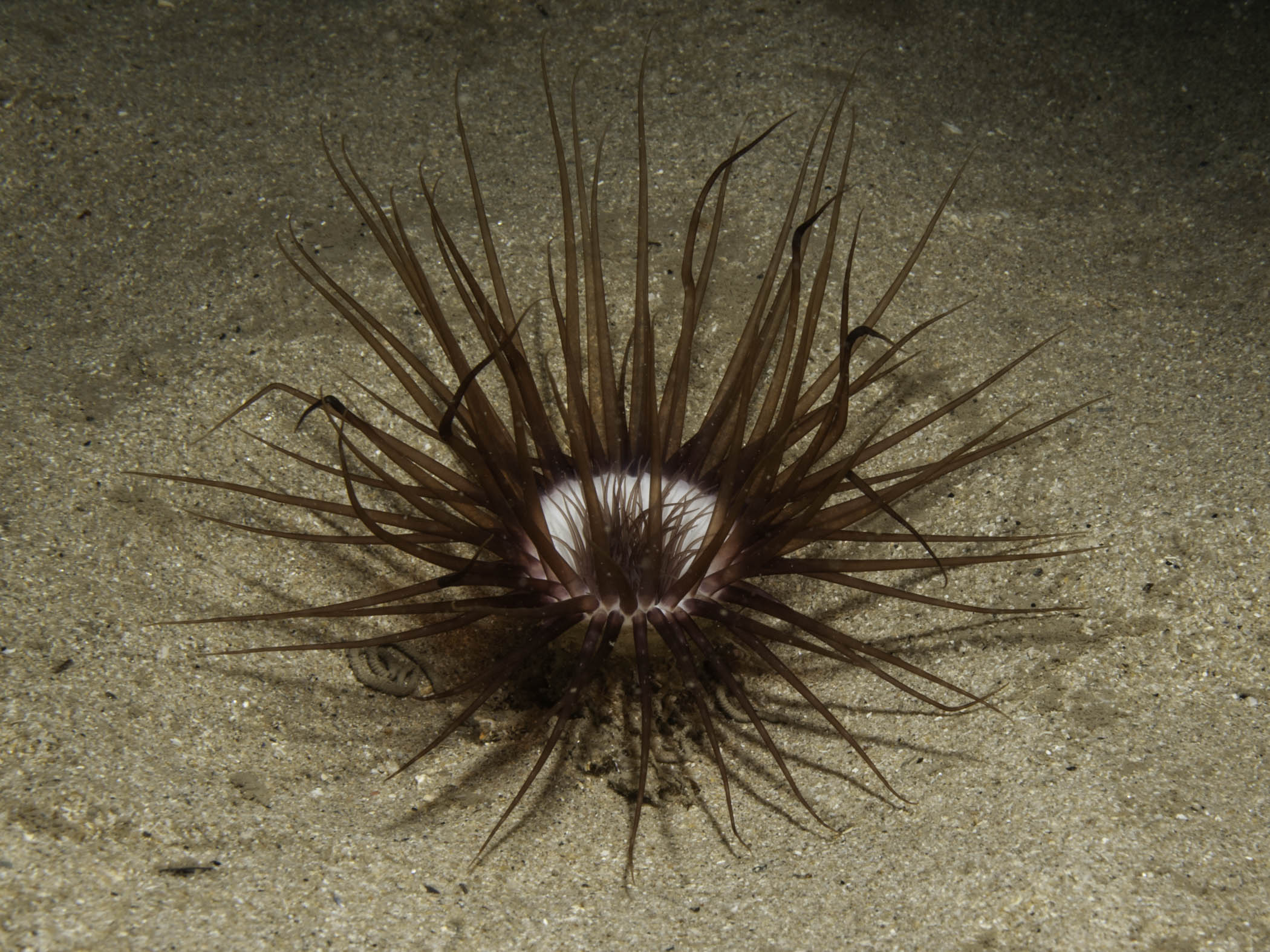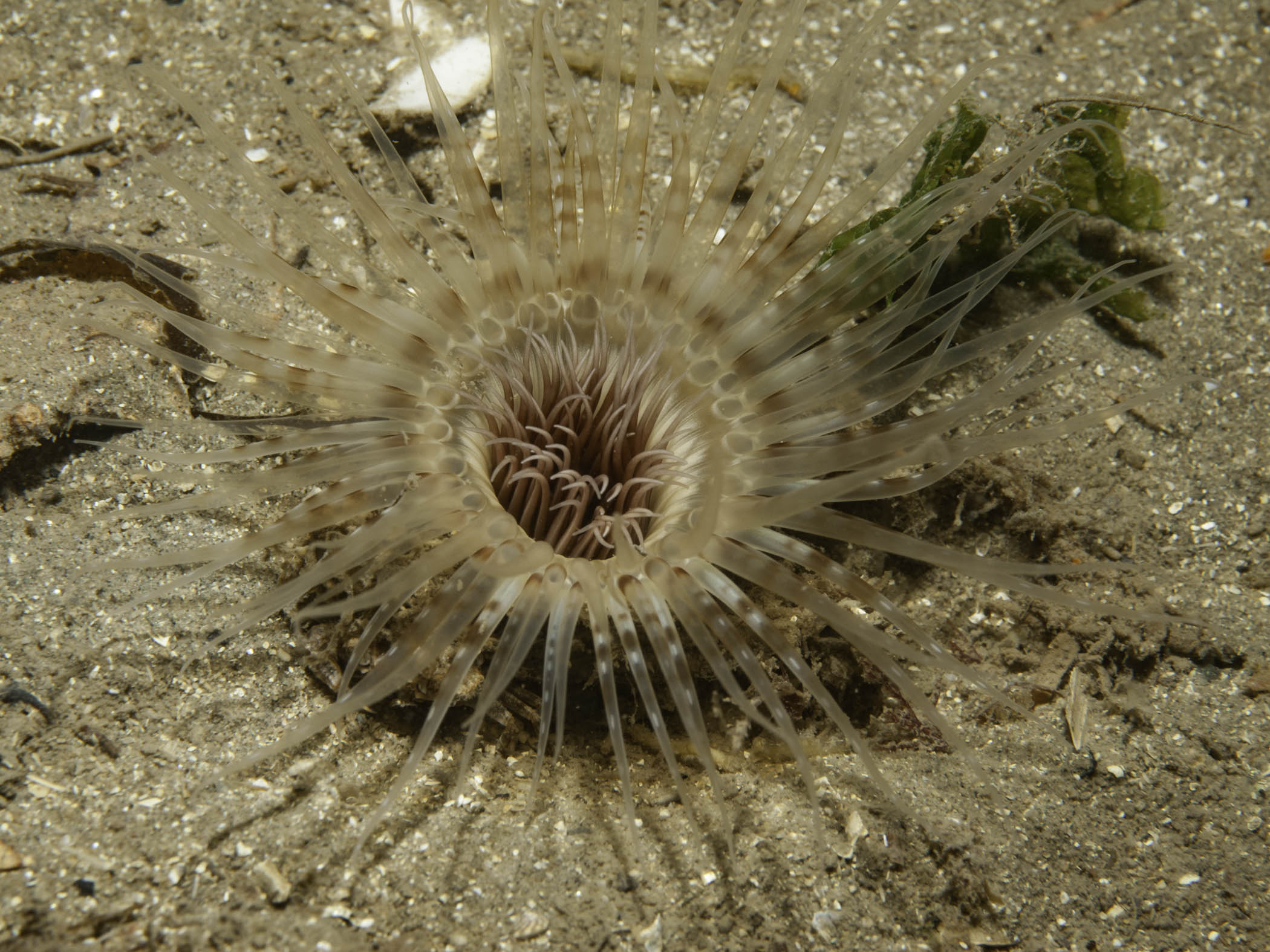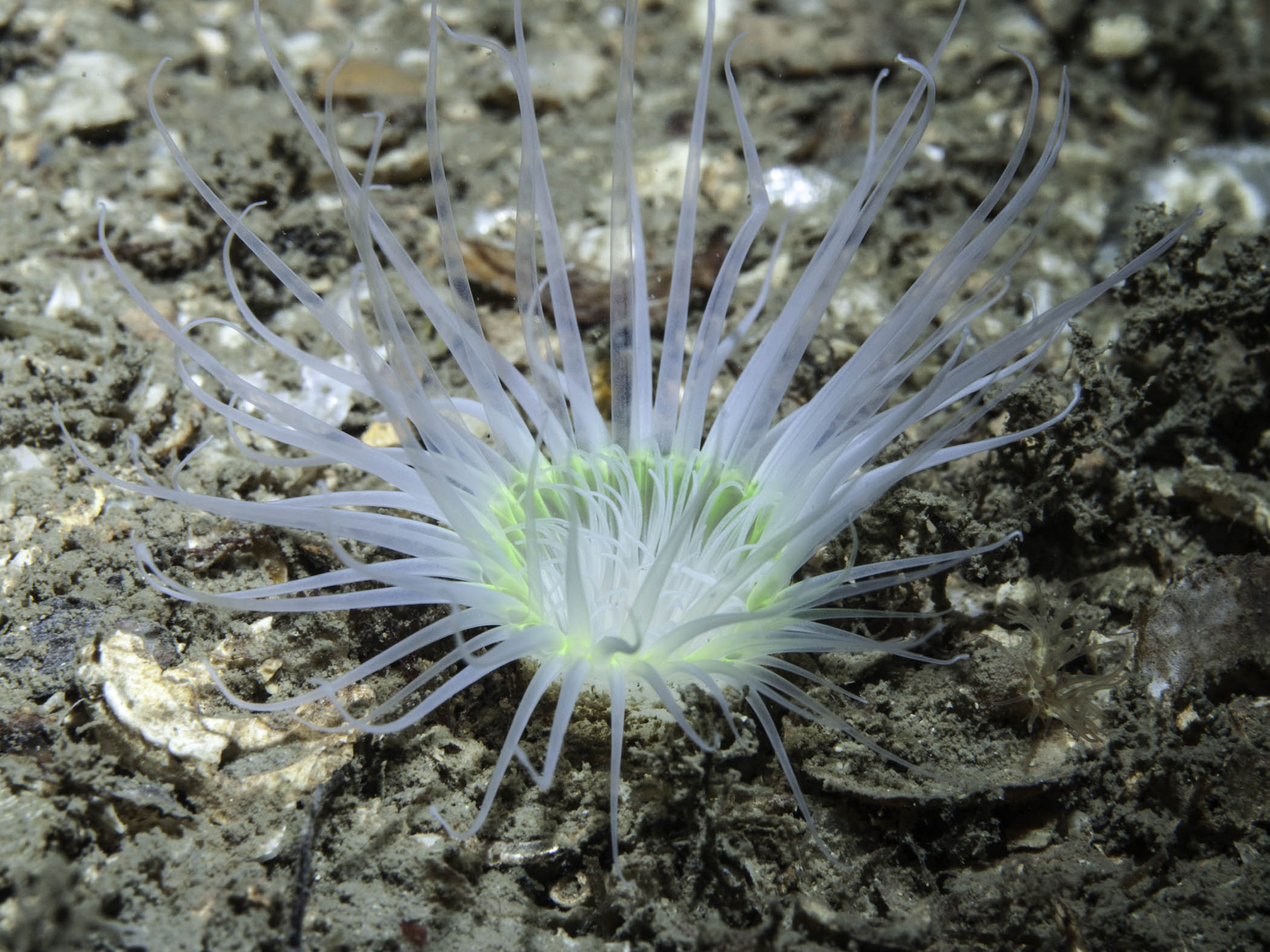| CNIDARIA : Ceriantharia : Synarachnactidae | SEA ANEMONES AND HYDROIDS |
Synarachnactis lloydii (Gosse, 1859)
 |
| Synarachnactis lloydii |
Description: Cerianthids are anemone-like anthozoans, living in a long, felt-like tube which is buried in sand or mud. Tentacles are expanded above substrate and occur in two series: short labial tentacles around the mouth, and long marginal tentacles at edge of disc. The column is elongate, and is free to move within the tube. The tentacles are usually brown, but may be white or green. The marginal tentacles are often banded. Span of tentacles up to 70mm.
Habitat: Burrows in sand or mud, sometimes in gravel. When disturbed it may contract very quickly into its tube, the opening of which remains protruding above the substrate. Occurs on the shore in some areas but is more common in the sublittoral, down to 100m or more.
Distribution: Locally abundant on all coasts of the British Isles and north western Europe, south to Biscay.
Similar Species: Might be confused with Pachycerianthus multiplicatus which is much larger, with up to 200 marginal tentacles. The occurrence of two series of tentacles distinguishes this group from burrowing sea-anemones.
Key Identification Features:
- Tentacles in two series; marginal tentacles up to 70 in number.
- Tentacles cannot be retracted into column (unlike most Actiniaria).
- Lives free within a long, buried tube.
Distribution Map from NBN: Synarachnactis lloydii at National Biodiversity Network mapping facility, data for UK.
iNaturalist: Synarachnactis lloydii at iNaturalist World Species Observations database.
WoRMS: Synarachnactis lloydii at World Register of Marine Species. Accepted name: Synarachnactis lloydii (Gosse, 1859). AphiaID: 1674631.
Classification: Biota; Animalia; Cnidaria; Anthozoa; Hexacorallia; Ceriantharia; Synarachnactidae; Synarachnactis
| Previous species | Next species |
| Picton, B.E. & Morrow, C.C. (2024). Synarachnactis lloydii. (Gosse, 1859). [In] Encyclopedia of Marine Life of Britain and Ireland. https://www2.habitas.org.uk/marbiop-ni/speciesaccounts.php?item=D10750. Accessed on 2025-04-04 |

